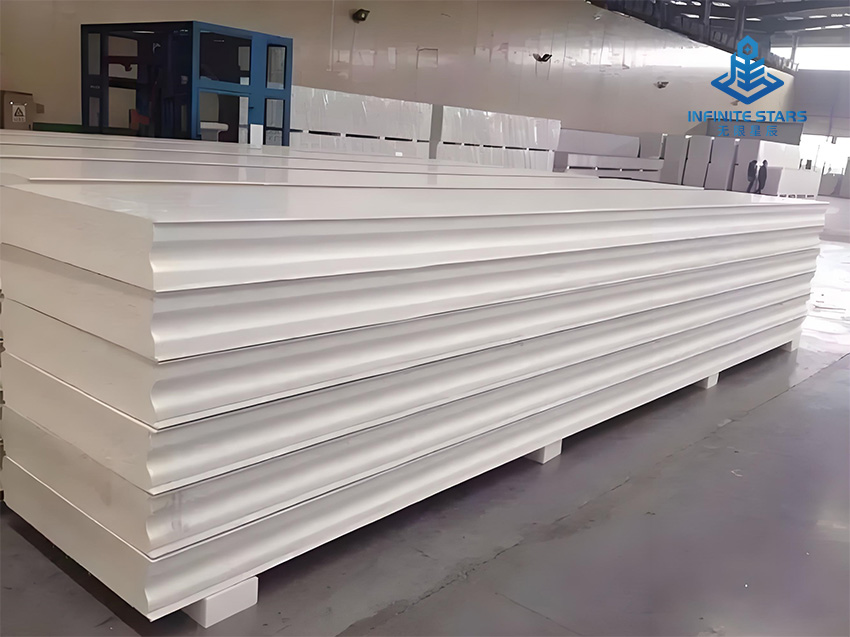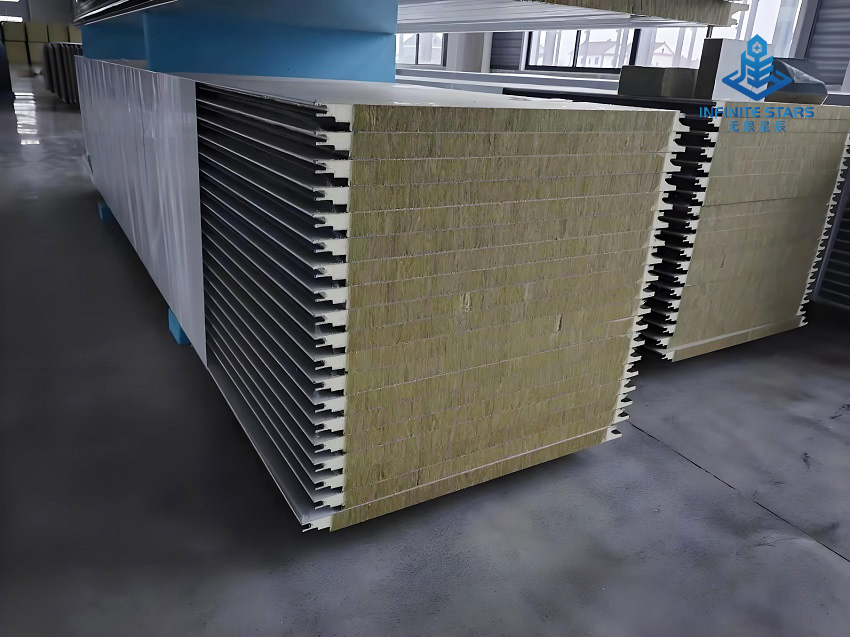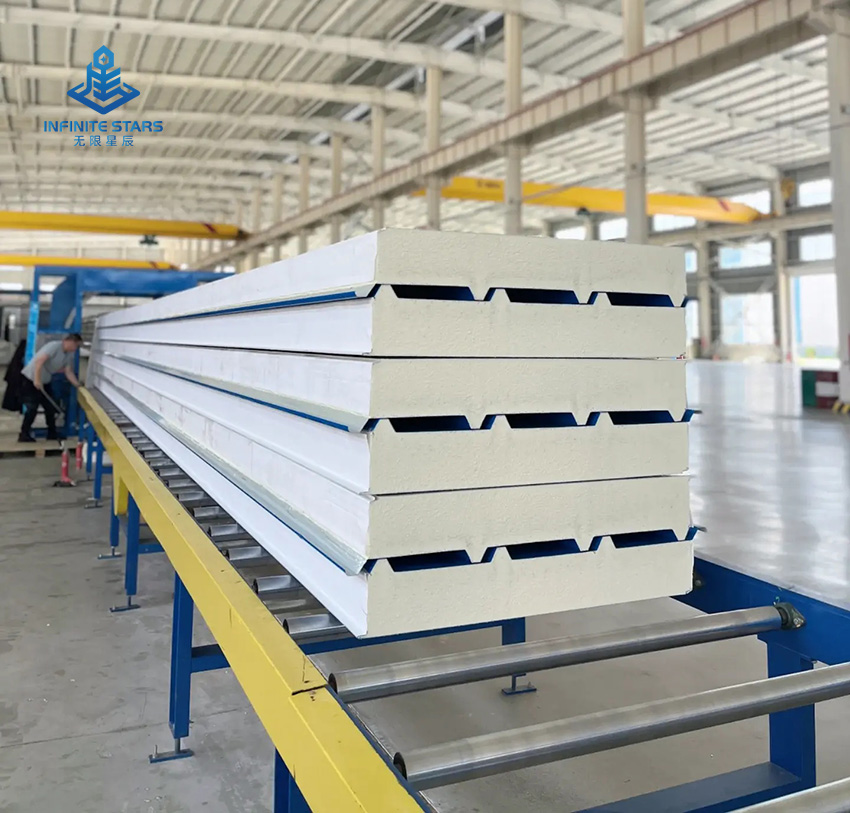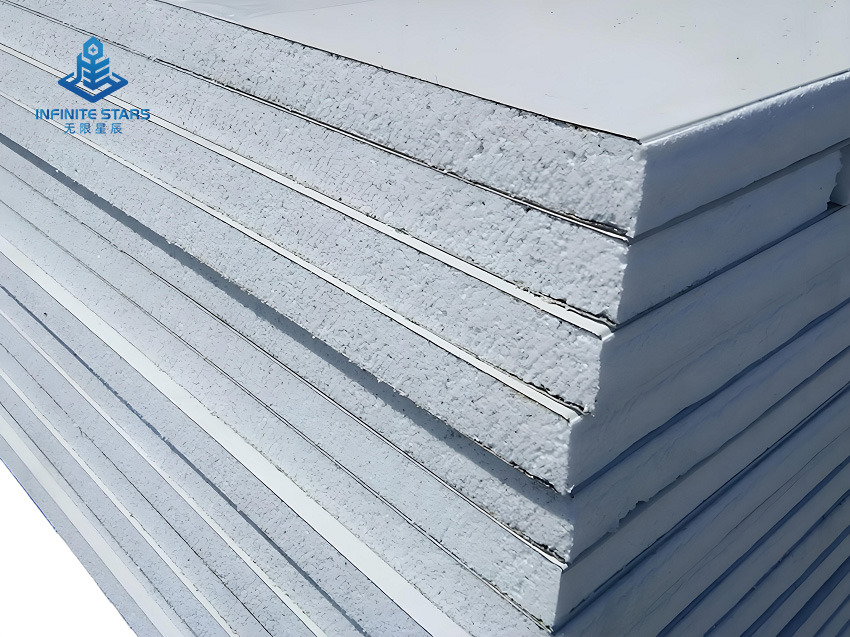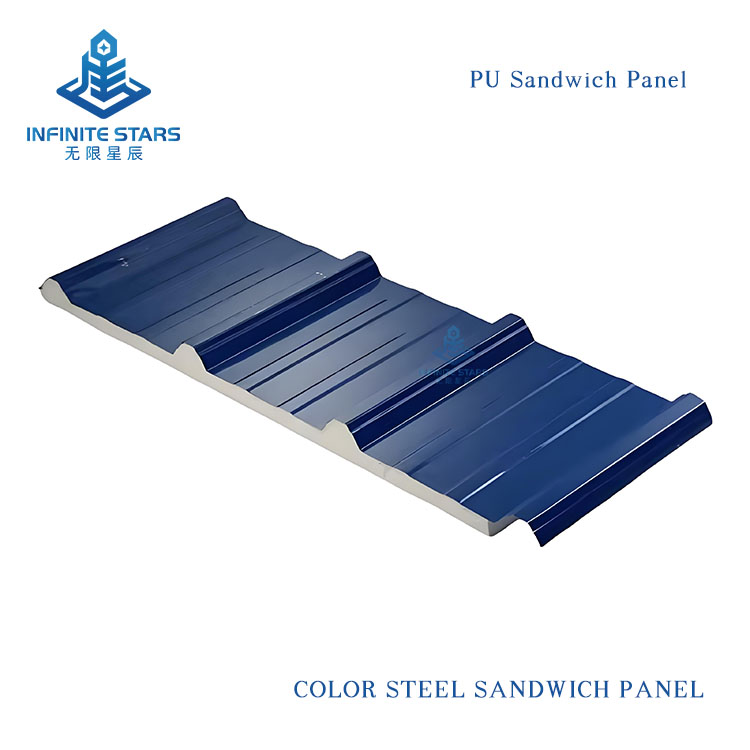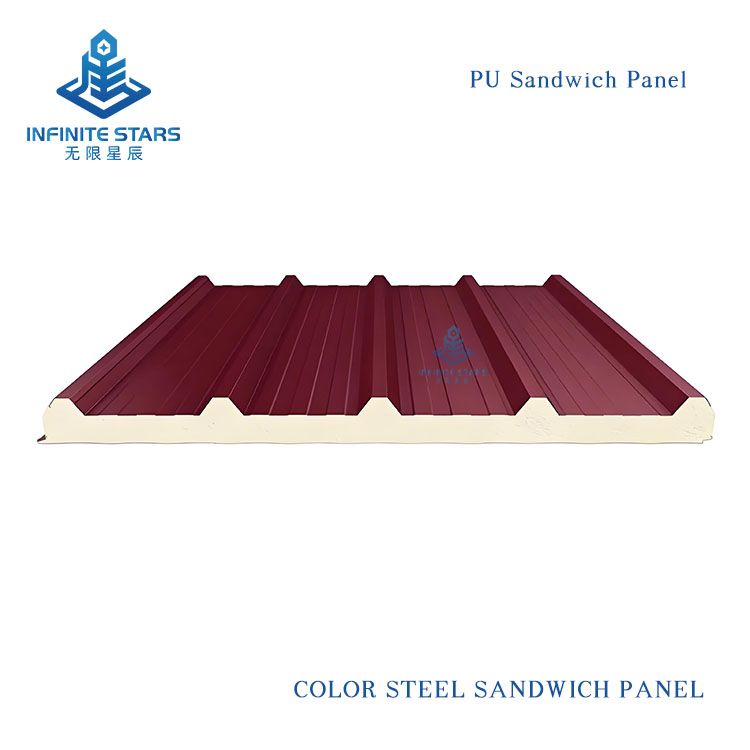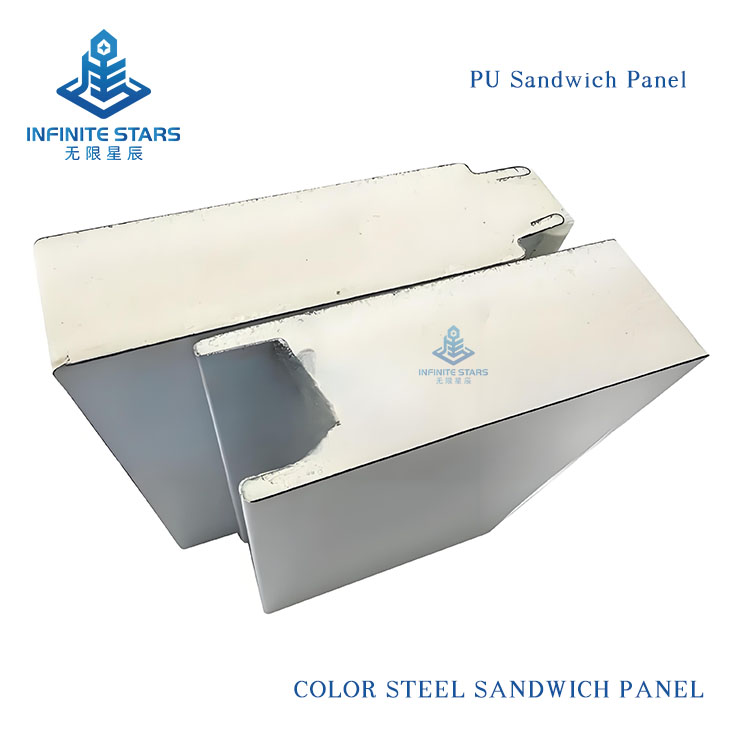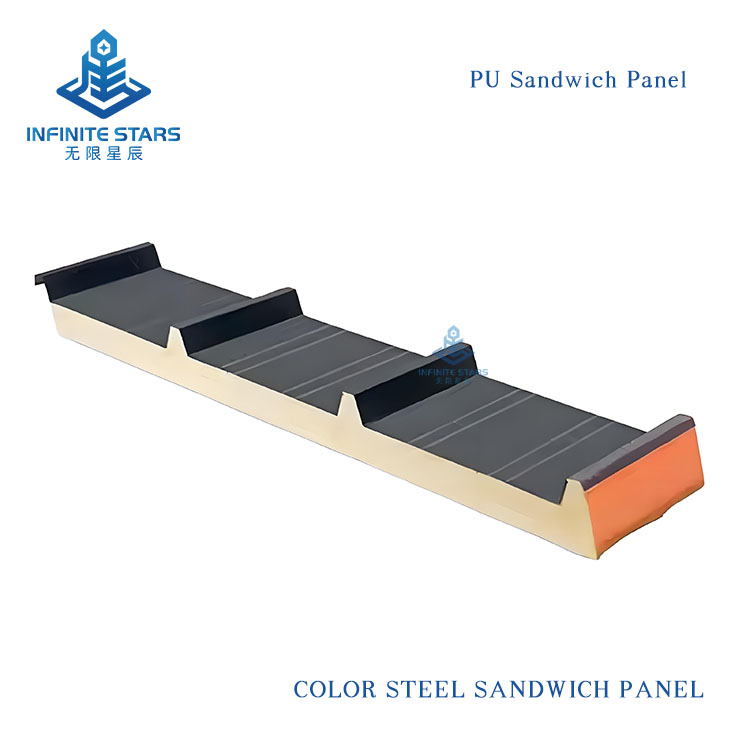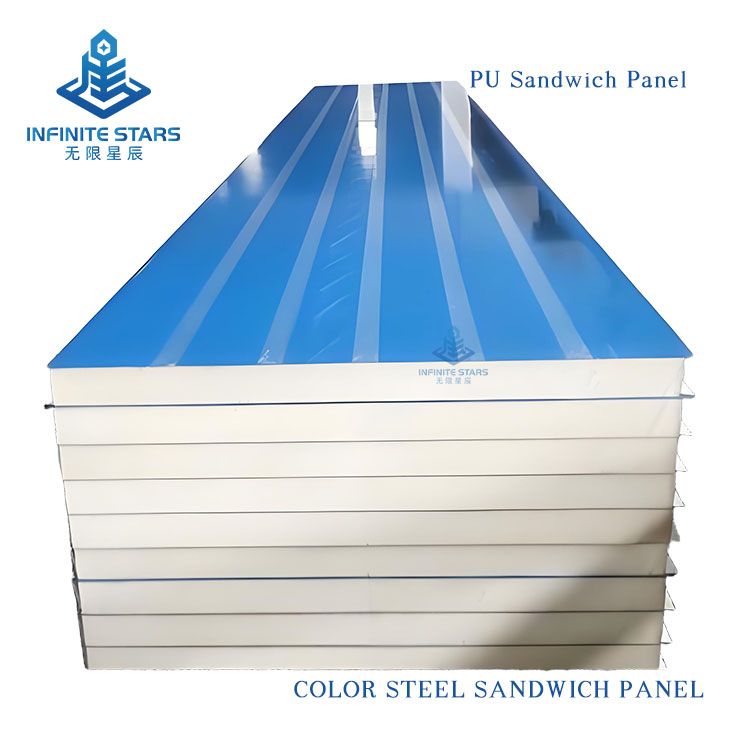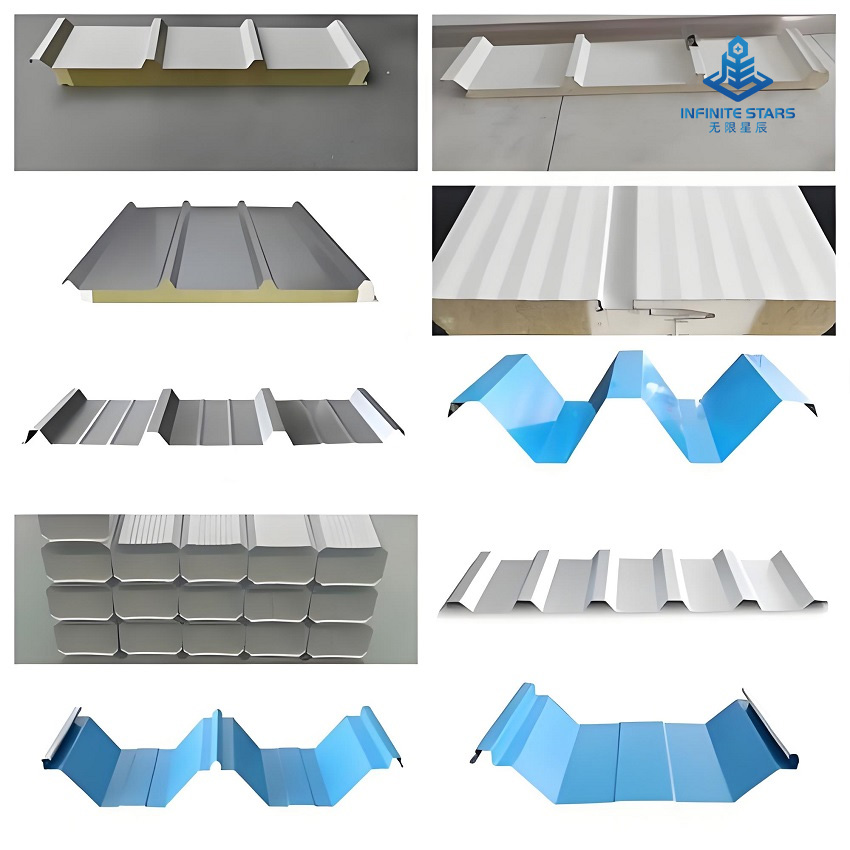
Introduction to PU Sandwich Panels
1. Structure and Composition
Facing Layers: Typically metal sheets (e.g., color-coated steel, stainless steel, aluminum, galvanized steel) or non-metal sheets (e.g., gypsum board, cement fiberboard).
Core Material: Rigid polyurethane foam (PU), injected between the panels under high pressure to form a tightly bonded structure.
Thickness: Usually 50–200 mm, customizable based on requirements.
2. Key Features
High Thermal Insulation: Low thermal conductivity (0.022–0.028 W/(m·K)), outperforming materials like rock wool and EPS.
Fire Resistance: Typically rated B1 (flame-retardant), with some treated versions achieving A2 (non-combustible).
Lightweight & High Strength: Density ~30–50 kg/m³, reducing structural load while maintaining strong compression/flexural strength.
Waterproof & Moisture-Resistant: Closed-cell rate ≥90%, preventing water vapor penetration.
Eco-Friendly: Some products use fluorine-free foaming technology, complying with green building standards.
Easy Installation: Can be cut, drilled, and installed quickly with modular construction.
3. Main Types
By Facing Material:
Metal-faced PU panels (most common for factories, warehouses).
Non-metal-faced PU panels (e.g., cleanrooms, labs).
By Application:
Wall panels (vertical load-bearing design).
Roof panels (waterproof drainage structure).
Cold storage panels (thicker, anti-condensation).
4. Applications
Industrial Buildings: Factories, warehouses, logistics centers (energy-saving).
Cold Chain Logistics: Cold storage, refrigerated trucks (insulation + sealing).
Public Buildings: Stadiums, exhibition halls (lightweight large-span roofs).
Cleanrooms: Hospitals, electronics workshops (fireproof + dust-free).
Temporary Structures: Prefabricated houses, construction site enclosures (quick assembly).
5. Pros and Cons
Advantages:
Superior thermal insulation, reducing long-term energy costs.
Lightweight, lowering structural expenses.
Good sound insulation and seismic resistance.
Disadvantages:
Standard PU core has limited high-temperature resistance (improved versions available).
Low-quality products may emit toxic fumes when burned (choose certified products).
6. Purchasing Considerations
Fire Rating: Prioritize B1 or A-rated certified panels.
Core Density: ≥40 kg/m³ for optimal strength.
Panel Coating: Choose PE/PVDF coatings for better weather resistance.
Brand & Certifications: Check ISO, CE, SGS, etc.
7. Popular Brands
Global: Kingspan (Ireland), Metecno (Italy).
China: Xuge,万事达 (WSD), CIMC Group.
PU sandwich panels, with their balanced performance, have become a mainstream choice for energy-efficient and eco-friendly modern construction, especially for projects requiring high insulation and fast installation. Proper selection of fire ratings and structural design is essential for optimal performance.
